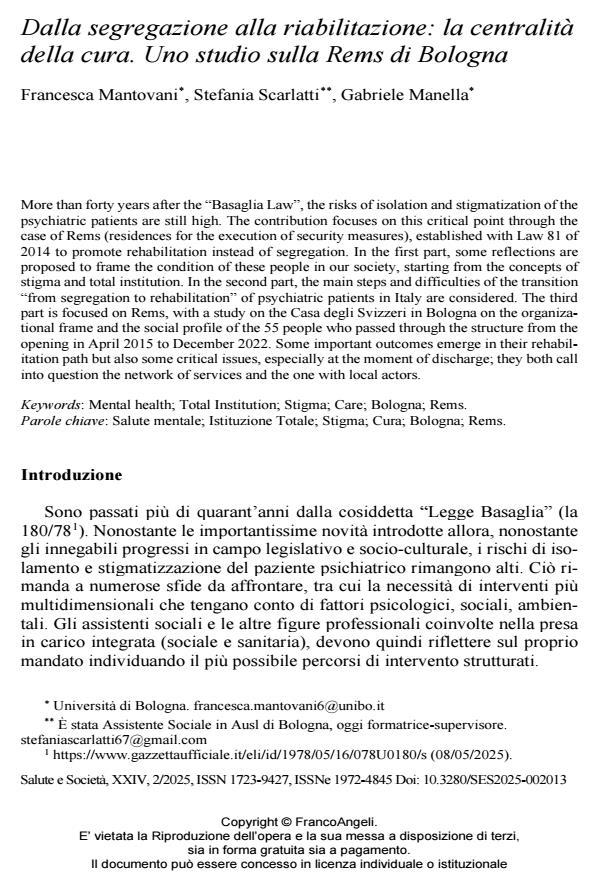Dalla segregazione alla riabilitazione: la centralità della cura. Uno studio sulla Rems di Bologna
Journal title SALUTE E SOCIETÀ
Author/s Francesca Mantovani, Stefania Scarlatti, Gabriele Manella
Publishing Year 2025 Issue 2025/2
Language Italian Pages 14 P. 156-169 File size 965 KB
DOI 10.3280/SES2025-002013
DOI is like a bar code for intellectual property: to have more infomation
click here
Below, you can see the article first page
If you want to buy this article in PDF format, you can do it, following the instructions to buy download credits

FrancoAngeli is member of Publishers International Linking Association, Inc (PILA), a not-for-profit association which run the CrossRef service enabling links to and from online scholarly content.
More than forty years after the “Basaglia Law”, the risks of isolation and stigmatization of the psychiatric patients are still high. The contribution focuses on this critical point through the case of Rems (residences for the execution of security measures), established with Law 81 of 2014 to promote rehabilitation instead of segregation. In the first part, some reflections are proposed to frame the condition of these people in our society, starting from the concepts of stigma and total institution. In the second part, the main steps and difficulties of the transition “from segregation to rehabilitation” of psychiatric patients in Italy are considered. The third part is focused on Rems, with a study on the Casa degli Svizzeri in Bologna on the organiza-tional frame and the social profile of the 55 people who passed through the structure from the opening in April 2015 to December 2022. Some important outcomes emerge in their rehabil-itation path but also some critical issues, especially at the moment of discharge; they both call into question the network of services and the one with local actors.
Francesca Mantovani, Stefania Scarlatti, Gabriele Manella, Dalla segregazione alla riabilitazione: la centralità della cura. Uno studio sulla Rems di Bologna in "SALUTE E SOCIETÀ" 2/2025, pp 156-169, DOI: 10.3280/SES2025-002013